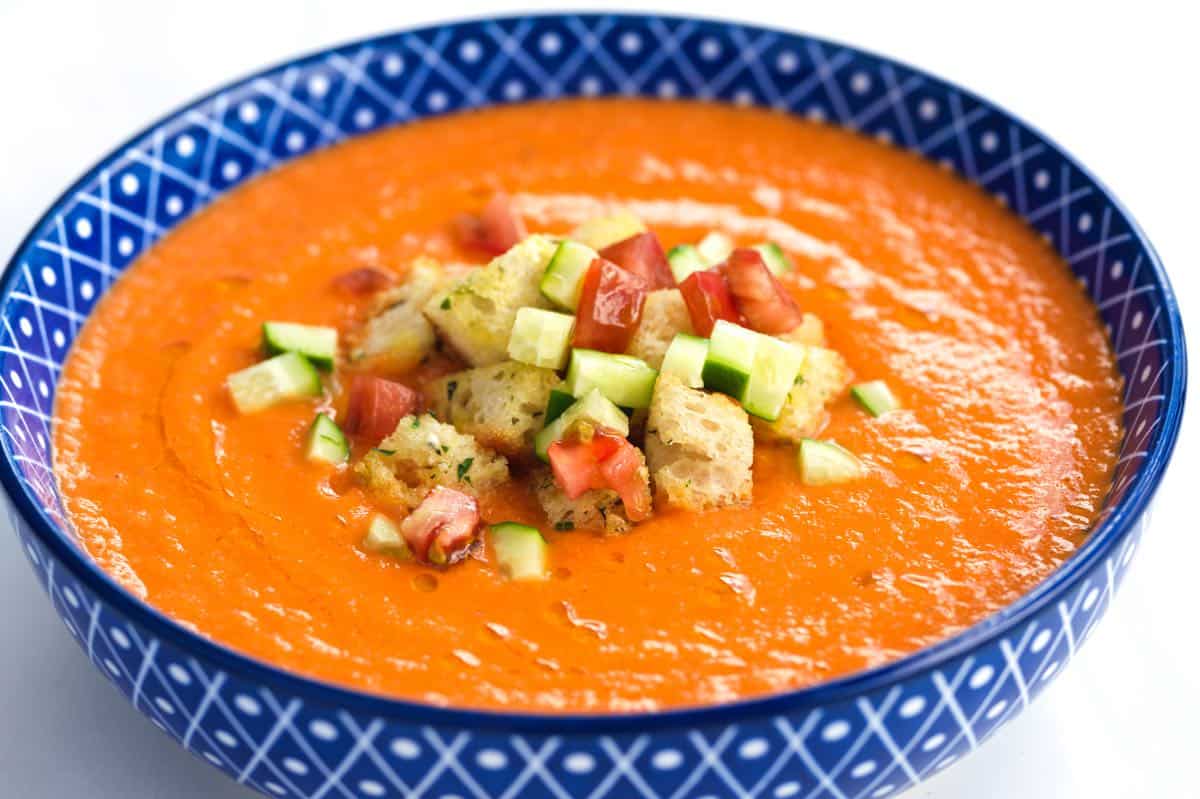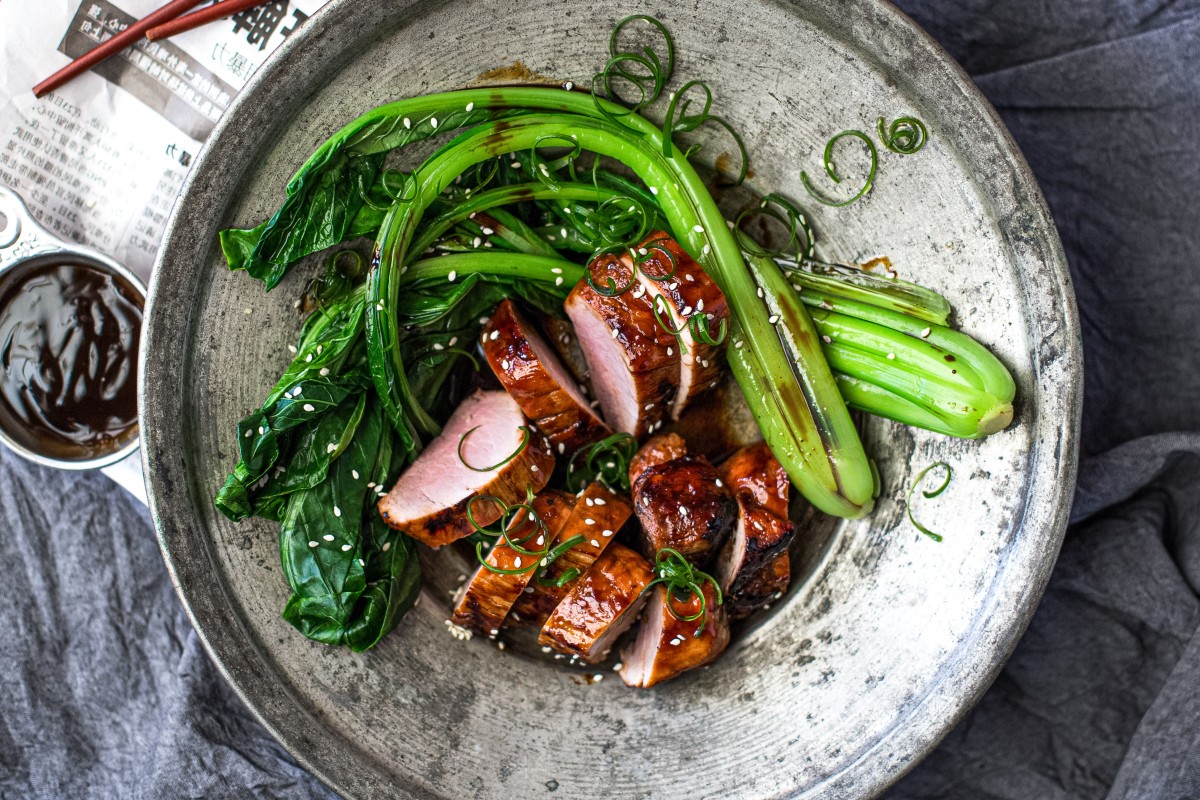In the scorching heat of southern Spain, where summer temperatures routinely soar above 40°C (104°F), culinary ingenuity gave birth to one of the world’s most celebrated cold dishes. Gazpacho, often described as a liquid salad, stands as a testament to the Mediterranean ability to transform necessity into culinary art. This vibrant cold soup has evolved from humble peasant origins into an internationally recognized symbol of Spanish cuisine, particularly associated with the sun-drenched region of Andalusia.
At its essence, traditional gazpacho is a harmonious blend of raw vegetables—primarily tomatoes, cucumbers, peppers, and garlic—combined with bread, olive oil, vinegar, and salt, all pureed to create a refreshing, tangy soup served chilled. Yet this seemingly straightforward preparation belies a rich cultural history that stretches back centuries, showcasing how geography, climate, agriculture, and cultural exchange can shape a region’s culinary identity.
Historical Roots: From Ancient Origins to Modern Classic
Pre-Columbian Foundations
The origins of gazpacho predate the now-essential tomato, revealing a lineage that stretches surprisingly far into the Iberian past. The earliest iterations emerged as a practical solution for field workers in the hot Andalusian countryside, who needed nourishment that would provide energy while cooling the body.
These proto-gazpachos consisted of stale bread, garlic, olive oil, vinegar, and water—ingredients easily transported and resistant to spoilage in the intense heat. Peasants would pound these components together in a mortar (called a “dornillo”) to create a sustaining mixture that provided calories, hydration, and vital nutrients. This bread-based preparation reflected the Moorish influence on Spanish cuisine, with similar preparations found throughout the Arab world.
The name itself offers clues to these ancient roots. Linguists debate whether “gazpacho” derives from the Latin “caspa” (fragments or little pieces), the Hebrew “gazaz” (to break into pieces), or the pre-Roman Mozarab word “caspa” (residue or fragments). All these etymological theories point to the soup’s humble beginning as a way to utilize bread fragments.
The Columbian Exchange and Gazpacho’s Evolution
The arrival of tomatoes, peppers, and cucumbers from the Americas following Columbus’s voyages revolutionized Mediterranean cuisine, and gazpacho was no exception. These New World ingredients gradually integrated into the traditional bread soup, creating the red gazpacho that most people recognize today.
By the 18th and 19th centuries, gazpacho had evolved into a dish with regional variations throughout Andalusia, but it remained primarily a rustic preparation associated with agricultural workers. The transition from peasant fare to sophisticated cuisine began when it entered the kitchens of southern Spanish estates, where refinements in texture and presentation elevated the humble soup.
Royal Recognition and International Spread
Gazpacho’s entry into aristocratic and eventually royal Spanish cuisine marked a turning point in its cultural status. The soup became fashionable in the courts of Seville and later Madrid, where its refreshing qualities were appreciated during formal summer gatherings. Elizabeth de Luard, a food historian, notes that by the 19th century, gazpacho was served in porcelain bowls garnished with carefully diced vegetables, a far cry from the communal dornillo from which field workers once ate.
The international spread of gazpacho gained momentum in the mid-20th century, coinciding with growing tourism to Spain and increased interest in Mediterranean cuisine. The soup’s combination of nutritional benefits, bold flavors, and refreshing qualities appealed to international palates seeking alternatives to heavy, cooked foods during summer months.
Regional Variations: Beyond the Red Soup
While the tomato-based red gazpacho dominates international perceptions of this Spanish classic, numerous regional variations exist throughout Spain, each reflecting local ingredients and cultural influences.
Andalusian Gazpacho: The Classic Red
The version most familiar outside Spain comes from Andalusia, particularly Seville and Córdoba. This gazpacho features ripe tomatoes, cucumber, bell pepper, garlic, stale bread, olive oil, wine vinegar, and salt, blended to a smooth consistency and served very cold. Traditional Andalusian service includes offering small bowls of diced vegetables (cucumbers, peppers, onions) as garnishes, allowing diners to add texture and visual appeal to their soup.
Gazpacho Blanco (White Gazpacho)
In Málaga and Granada, white gazpacho (also called ajo blanco) represents an older variation that likely predates the introduction of tomatoes to Europe. This version centers on ground almonds, garlic, bread, olive oil, and vinegar, creating a creamy white soup often garnished with green grapes or apple. This preparation highlights the Moorish influence on Spanish cuisine, with its use of almonds and fruit reflecting the culinary traditions brought to Iberia during the centuries of Islamic rule.
Salmorejo Cordobés
Often confused with gazpacho, salmorejo from Córdoba represents a thicker, creamier preparation made with tomatoes, bread, olive oil, garlic, and vinegar. Unlike gazpacho, it contains a higher proportion of bread and is served garnished with diced hard-boiled eggs and jamón serrano (cured ham). This heartier variation functions more as a light meal than a starter and demonstrates how small changes in proportion can transform similar ingredients into distinctly different dishes.
Extremaduran Variations
In the neighboring region of Extremadura, gazpachos often incorporate local ingredients like wild herbs, pennyroyal mint, and sometimes game meats. One traditional version called “gazpacho de pastor” (shepherd’s gazpacho) features pieces of bread floating in the broth rather than blended in, preserving the original concept of a bread soup.
Traditional Preparation: Craft and Technique
The Importance of Quality Ingredients
Perhaps more than many complex dishes, gazpacho relies entirely on the quality of its raw ingredients. Traditional preparation demands:
- Tomatoes that are perfectly ripe, sweet, and intensely flavored
- Extra virgin olive oil of high quality, preferably with a fruity rather than bitter profile
- Aged sherry vinegar (vinagre de Jerez) for authentic Andalusian character
- Day-old bread made from high-quality wheat
- Vegetables at peak freshness and ripeness
In traditional Spanish households, these ingredients would be sourced locally, often from family gardens or trusted market vendors who understand the specific requirements for gazpacho-worthy produce.
Traditional vs. Modern Preparation Methods
Historically, gazpacho was prepared by hand in a large wooden bowl or dornillo. Bread would be soaked in water, then pounded with garlic and salt using a wooden pestle. Oil would be gradually incorporated to form an emulsion (similar to the technique for making alioli), with vinegar added to taste. Finally, the vegetable components would be pounded or chopped into the base.
This labor-intensive method produced a textured soup with varying consistency. Modern preparation typically employs blenders or food processors, creating a smoother, more uniform texture. While more convenient, some traditionalists argue that mechanical blending generates heat that can affect the delicate flavors of the raw ingredients. They advocate for hand preparation or, at minimum, chilling all ingredients before blending and using the pulse function rather than continuous blending.
The Role of Bread
Bread serves multiple crucial functions in traditional gazpacho:
- Thickening agent: It provides body and substance to what would otherwise be a thin vegetable juice
- Emulsifier: The starches in bread help bind the water-based vegetable juices with olive oil, creating a stable emulsion
- Mellowing agent: Bread softens the acidity of tomatoes and vinegar and the pungency of raw garlic
- Historical connection: Its inclusion honors gazpacho’s origins as a way to use stale bread, preventing waste
Traditional preparation calls for day-old bread with the crusts removed, soaked in water and then squeezed to remove excess moisture before incorporation.
Gazpacho in Contemporary Cuisine: Innovation and Adaptation
Nouvelle Cuisine Interpretations
The late 20th century saw significant experimentation with gazpacho as chefs embraced the principles of nouvelle cuisine. Spanish chef Ferran Adrià’s watermelon gazpacho and cherry gazpacho exemplify how traditional techniques can be applied to non-traditional ingredients, creating refreshing variations that maintain the soul of the original while exploring new flavor combinations.
Other modern interpretations include:
- Green gazpacho emphasizing cucumber, green pepper, and herbs
- Yellow gazpacho featuring yellow tomatoes and golden bell peppers
- Fruit-based variations incorporating strawberries, cherries, or melon
- Seafood gazpachos garnished with shrimp or crab
Gazpacho Beyond the Bowl
Contemporary chefs have taken gazpacho beyond its identity as soup, using it as:
- A sauce for grilled fish or seafood
- The base for savory granitas or sorbets
- A dressing for summer salads
- An ingredient in cocktails, particularly updated Bloody Marys
- A cold pasta sauce for summer dishes
These adaptations demonstrate gazpacho’s versatility while maintaining connections to its refreshing, vegetable-forward identity.
International Adaptations
As gazpacho has traveled beyond Spain, it has been adapted to local tastes and ingredients:
- In Mexico, variations often incorporate chili peppers for heat
- American versions sometimes add avocado for creaminess
- Northern European adaptations might include apple or dill
- Asian-influenced versions might incorporate ginger, lemongrass, or rice vinegar
While purists might question these adaptations, they reflect the living nature of culinary traditions and gazpacho’s fundamental appeal across cultures.
Nutritional Profile: Ancient Wisdom in Modern Nutrition
A Nutritionist’s Dream
Modern nutritional science validates what Andalusian farmers intuited centuries ago: gazpacho provides an ideal mix of nutrients for hot weather. The soup offers:
- Hydration: High water content from vegetables helps maintain fluid balance during heat
- Electrolytes: Sodium from salt and potassium from vegetables help prevent dehydration
- Antioxidants: Lycopene from tomatoes, vitamin C from peppers, and polyphenols from olive oil provide protective benefits
- Healthy fats: Olive oil delivers monounsaturated fats associated with cardiovascular health
- Prebiotics: Raw garlic and vegetables provide compounds that support gut health
- Low caloric density: The soup provides satisfying volume with relatively few calories
Research from the University of Barcelona suggests that gazpacho consumption correlates with reduced inflammation markers and improved cardiovascular indicators, supporting the traditional belief in its health-promoting properties.
Raw Food Benefits
As an uncooked preparation, gazpacho preserves heat-sensitive nutrients like vitamin C and certain B vitamins that might be diminished in cooked dishes. The raw ingredients also retain their natural enzymes, which some nutrition theories suggest may aid digestion.
Cultural Significance: Beyond Nutrition
Gazpacho in Spanish Identity
For Andalusians particularly, gazpacho represents more than mere sustenance—it embodies cultural identity, connecting modern diners to centuries of agricultural tradition. The annual “Gazpacho Andaluz” festival in Córdoba celebrates this heritage, featuring competitions for the best traditional and innovative variations.
Spanish writer Manuel Vázquez Montalbán described gazpacho as “the perfect example of Mediterranean cultural syncretism,” referring to its ability to incorporate influences from various civilizations that have shaped Iberian culture—Roman, Moorish, Jewish, and Christian.
Literary and Artistic References
Gazpacho appears frequently in Spanish literature and art as a symbol of Andalusian heritage. Pedro Almodóvar’s film “Women on the Verge of a Nervous Breakdown” memorably features gazpacho laced with sleeping pills, introducing many international viewers to this Spanish classic. Nobel laureate Camilo José Cela’s novel “Journey to the Alcarria” mentions gazpacho as an emblem of Spanish rural tradition.
Conclusion: Timelessness in a Bowl
Gazpacho’s journey from peasant sustenance to international culinary star illustrates how the most enduring dishes often emerge from practical necessity rather than culinary ambition. Its continued relevance speaks to universal appreciation for clean flavors, refreshing textures, and healthful ingredients.
Whether enjoyed as a first course at a sophisticated restaurant in Seville, sipped from a glass during a summer gathering in Madrid, or prepared in a home kitchen thousands of miles from Spain, gazpacho maintains its essential character—a celebration of summer’s bounty transformed into liquid refreshment. In its vibrant colors, bright flavors, and cooling effect, it captures the essence of Mediterranean summer and the ingenuity of a culinary tradition that transformed the challenges of extreme heat into an opportunity for delicious innovation.
As climate change brings warmer temperatures to more regions around the world, gazpacho’s ancient wisdom—providing nutrition, hydration, and pleasure without adding heat to the kitchen—seems increasingly relevant to contemporary diners. This centuries-old preparation continues to offer modern cooks exactly what it gave Andalusian field workers generations ago: a delicious respite from summer’s heat and a celebration of seasonal abundance in its most refreshing form.




